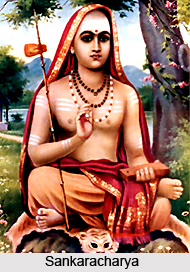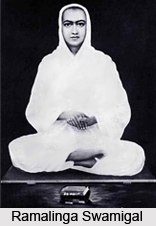 History of Thyagaraja Temple, situated in Tamil Nadu, dates back to the 7th century when it was constructed under the Pallava rule. Later, the temple underwent demolition and renovation during different regimes in India. The rituals associated with the temple also belong to the ancient era, many of which still prevail in the temple. Several inscriptions are found in the temple, which have played an important role in unfolding the history of Thyagaraja temple. The temple also bears association with the Indian mythology.
History of Thyagaraja Temple, situated in Tamil Nadu, dates back to the 7th century when it was constructed under the Pallava rule. Later, the temple underwent demolition and renovation during different regimes in India. The rituals associated with the temple also belong to the ancient era, many of which still prevail in the temple. Several inscriptions are found in the temple, which have played an important role in unfolding the history of Thyagaraja temple. The temple also bears association with the Indian mythology.
Mythological History of Thyagaraja Temple
Lord Brahma is regarded as the Hindu God of creation and is amongst the three primary Gods of Hinduism along with Lord Vishnu and Lord Shiva. The Gods and demons were created by him and both the groups have clashes with each other. Demons, also called as asuras, make use of the muscle power whereas the Gods, also known as devas, apply the power of the sacred texts Vedas. Once Madhu and Kaithaba, two demons, stole the Veda and hid it at the bottom of the sea after chopping into pieces. Lord Vishnu fought against the demons but failed to defeat them. Thus he prayed to Shiva and Parvati and then successfully achieved victory over the demons. He assumed the form of a fish or Matsya for searching the Veda and recovered it from the bottom of the sea. He then brought the Veda to the deity of Thyagaraja temple who reunited its pieces and purified the Veda. Makizha tree, also known as the wishing tree of Gods, also became the sacred tree of this temple.
Ancient History of the Thyagaraja Temple
In ancient times Thyagaraja temple served as a centre of learning and there were halls inside it for religious discourses encompassing varied subjects like Somasiddantha (philosophy), Vyakarna (translation) and Panini`s grammar. During 9th century, a hermitage was attached to the temple which was presided over by Caturananas Pandithar. Expositions on grammar and philosophical discourses were also held in the temple. Recital of Bharata, Panchanga, Sivadharma, Purana, Yamala, Rudra and Prabhakara can also be found in the references. Learned scholars and their generation including Archanavritti, Vaidyavritti, Bhattavriti and Vedavritti received lands as grants.
Thyagaraja temple hosts a number of inscriptions which dates back to Pallava period. The 7th century scholar, Shankaracharya, belonging to the advaita school of Hinduism is said to have visited the temple for defeating the power of evil. Originally the temple was constructed by Pallavas and was later rebuilt by Rajendra Chola I. An inscription of 954 CE which marked the fifth year of the Chola king Gandaraditya can be traced here. Another inscription from 1046 CE narrates the installation of 64 bronze nayanmar statues in the temple. Equal number of Devadasis or dancing girls were also there in the temple. They were divided into two groups in which one group was idangai dasis that danced for Vadivudaiamman and the other one was valankai dasis which danced for Thyagaraja.
Much of Thyagaraja temple got destroyed during the regime of Malik Kafur. The bronze statues which can be presently seen in the temple were later installed in the 15th century during Vijayanagara period. The practice of animal sacrifice to the goddess was in vogue in the temple as per the inscriptions of 13th century. This was accompanied by the offering of intoxicating drink till the early 2000s. Prominent saints such as Ramalinga Swamigal, Topeswamigal and Pattinathar were the inhabitants of this town and used to pray to Thyagaraja in this temple. It is also the homeland for Thiruvottiyur Thyagayyar, a carnatic composer and poet.





















